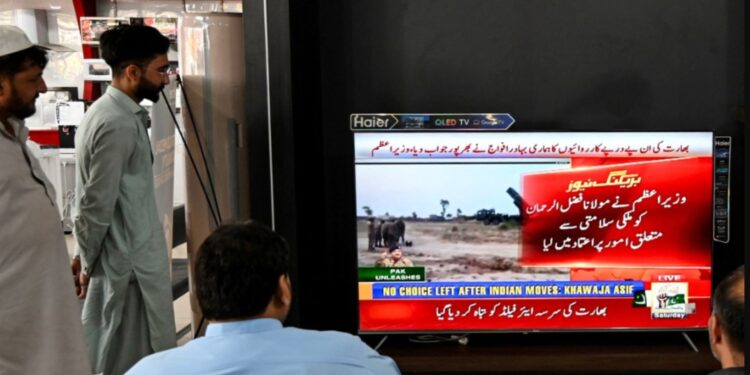The brief but intense conflict between India and Pakistan in May 2025 will be remembered not just for its military engagements, but for the unprecedented digital war that raged alongside it. As missiles crossed borders, a deluge of AI-generated deepfakes, recycled footage, and outright disinformation flooded screens, blurring the line between truth and propaganda and creating an unparalleled “fog of war” in the information space.
This conflict marked a significant turning point, showcasing how Artificial Intelligence has been weaponized to shape public perception on a grand scale. One of the most alarming instances was a deepfake video of Pakistani Prime Minister Shehbaz Sharif, manipulated to show him conceding defeat and lamenting a lack of international support. In reality, the original footage depicted him commending the Pakistan Air Force’s response. The altered version, crafted with AI voice cloning and lip-sync technology, was disturbingly believable and quickly went viral.
On the Indian side, animated footage portraying Indian missiles intercepting Pakistani drones and jets was aired on mainstream media, often without clear disclaimers that these were simulations, leading viewers to believe they were witnessing real-time battlefield events. Beyond AI, older tactics of misinformation remained potent. Videos from the 2020 Beirut port explosion were falsely presented as Indian airstrikes, and footage of Israel’s Iron Dome from 2021 was passed off as real-time events in India. These incidents underscore that while AI adds a new layer of realism, the core elements of disinformation – emotionally charged content and rapid dissemination – remain crucial.
The consequences of this digital onslaught were severe. False claims of cities destroyed or pilots captured inflamed nationalist sentiment and risked pressuring leaders into escalatory responses in a region where miscalculation has dire implications. Furthermore, the willing or negligent participation of some media outlets and verified social media accounts in spreading these falsehoods eroded public trust in legitimate journalism.
This hybrid battlefield, where truth became both a casualty and a weapon, highlights the urgent need for robust fact-checking mechanisms, increased media literacy, and greater accountability from social media platforms. As AI continues to evolve, the challenge of discerning reality from fabrication will only intensify, demanding a concerted global effort to safeguard the integrity of information in times of conflict.
















